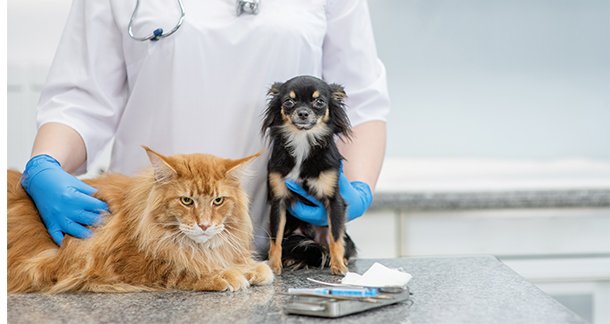As pet parents, we notice everything, whether it’s a wagging tail, a missed meal, or that extra nap our furry friend took. But what happens when your dog suddenly collapses or your cat starts trembling for no reason?
That’s where nervine issues come into play. They can be scary, confusing, and in some cases, life-threatening. But the good news? Many of them are manageable, and even preventable.
Let’s dive into what nervine disorders are, what causes them, how to recognize early signs, and what you can do to protect your pets.
What Are Nervine Disorders?
Nervine disorders are conditions that affect your pet’s nervous system, including the brain, spinal cord, and the nerves that control everything from movement to behavior.
Common Signs of Nervine Disorders:
- Seizures or fits
- Sudden collapse or shaking
- Loss of coordination or balance
- Inability to move limbs
- Tremors or twitching
- Head tilt or walking in circles
- Unexplained aggression or anxiety
These signs often indicate that the brain is not communicating properly with the body.
Common Causes of Nervine Disorders
There’s no single cause of nervine disorders. They can result from infections, trauma, chronic diseases or sometimes, no known cause at all (idiopathic).
- Tapeworms in the Brain
Some parasites, like Taenia multiceps, can migrate from the stomach to the brain. This can lead to fits, tremors, or abnormal behavior.
Prevention: Regular deworming is a must. Puppies and kittens need frequent deworming. Adults should be dewormed every 3 months.
- Distemper Virus
Distemper is a highly contagious disease that affects the nervous system in dogs. It can cause twitching, tremors, seizures, even after recovery.
Prevention: The DHPPi vaccine protects against distemper. Don’t miss it, and follow booster schedules.
- Idiopathic Epilepsy
This is a genetic condition where pets experience repeated seizures without any clear cause. It often starts between 6 months to 3 years of age.
Management: Anti-seizure medication and regular vet follow-ups help manage it long term.
- Head Injuries or Trauma
Falls, road accidents, or rough play can lead to spinal or brain injuries, causing paralysis, fits, or balance issues.
Prevention: Ensure a pet-safe environment at home. Use leashes during walks and guard balconies and stairs.
- Chronic Kidney Disease (CKD)
In older pets, CKD can cause toxin build-up, leading to confusion, disorientation, or even seizures.
Prevention: Regular blood and urine tests, especially for senior pets. Early diagnosis helps manage it better.
- Liver Shunt (Portosystemic Shunt)
This is more common in young pets. The liver doesn’t filter toxins properly, leading to hepatic encephalopathy, which causes drooling, seizures, or circling.
Prevention: Watch for stunted growth, confusion, or behavior changes after meals in puppies/kittens.
- Brain Tumors
Older pets may develop brain tumors, causing head tilts, seizures, or sudden behavior changes.
Prevention: There’s no guaranteed prevention, but early detection through wellness checkups and scans is key.

Common Nervine Conditions in Pets
|
Condition |
Key Symptoms |
|
Epilepsy |
Repeated seizures, drooling, limb paddling |
|
Distemper (late phase) |
Twitching, jaw chewing fits, seizures |
|
Vestibular Disease |
Head tilt, loss of balance, circling |
|
IVDD (Spinal Disc Disease) |
Paralysis, pain, hind leg weakness |
|
Encephalitis/Meningitis |
Fever, stiffness, neck pain, confusion |
Seizures in Pets: What You Should Know
Watching a pet have a seizure can be distressing. But knowing what to do can make a big difference.
What a Seizure Looks Like:
- Jerking or paddling legs
- Drooling or frothing at the mouth
- Sudden collapse
- Temporary loss of consciousness
- Involuntary urination or defecation
What To Do During a Seizure:
- Stay calm. Don’t try to restrain your pet.
- Clear the area. Remove furniture or sharp objects nearby.
- Time the seizure. More than 5 minutes = emergency.
- Call your vet. A video recording can help the vet with diagnosis.
Managing Nervine Disorders
Many nervine issues are treatable or manageable with timely action.
Treatment Options:
- Anti-seizure meds for epilepsy (e.g., phenobarbital)
- Steroids/antibiotics for brain inflammation
- Surgery or rest for spinal injuries like IVDD
- Supportive care for CKD- or liver-related seizures
Follow-up care is just as important. Never adjust medication doses without your vet’s advice.
Nutrition for Nervous System Health
A balanced diet supports not just physical health but also a strong, healthy nervous system.
🌟 Key Nutrients:
- Omega-3 (Fish Oil): Supports brain development
- Vitamin B complex: Protects nerves
- Taurine (for cats): Essential for brain and heart
- Antioxidants: Help fight nerve damage
Feed your pet high-quality food, whether home-cooked or commercial and add supplements as prescribed by your vet.
Prevention: Your First Line of Defense
Most nervine disorders don’t just appear overnight. The signs are often subtle at first. Prevention, as always, is better than cure.
Checklist for Prevention:
Follow vaccination schedules
Deworm your pet regularly
Feed a balanced, nutritious diet
Keep your pet physically and mentally active
Go for regular health checkups, especially for seniors
Ensure a safe, trauma-free home environment
When in Doubt, Contact Your Vet
Seizures, disorientation, or balance issues are not normal in pets. These are signs that something’s going wrong inside, most likely with their nervous system.
A timely visit to the vet can help manage the issue and improve your pet’s quality of life. Many pets with conditions like epilepsy, spinal problems, or even chronic diseases can live long and happy lives with proper care.
Final Thoughts
Your pets depend on you. And when it comes to nervine disorders, your attention can save lives.
Spot the early signs. Don’t ignore those small twitches, stumbles, or odd behaviors. Speak to a vet. Get help early.
At MyFurries.com, we’re here for you, whether it’s expert vet consultations, regular deworming plans, or our FurFit Wellness Program to keep your pet on track. Prevention begins at home, with the right knowledge and the right partner by your side.
💙 Stay informed. Stay connected. And keep your pet’s tail wagging, always.
Dr Vinay Chhabra
Chief Veterinary Officer
MyFurries.com

